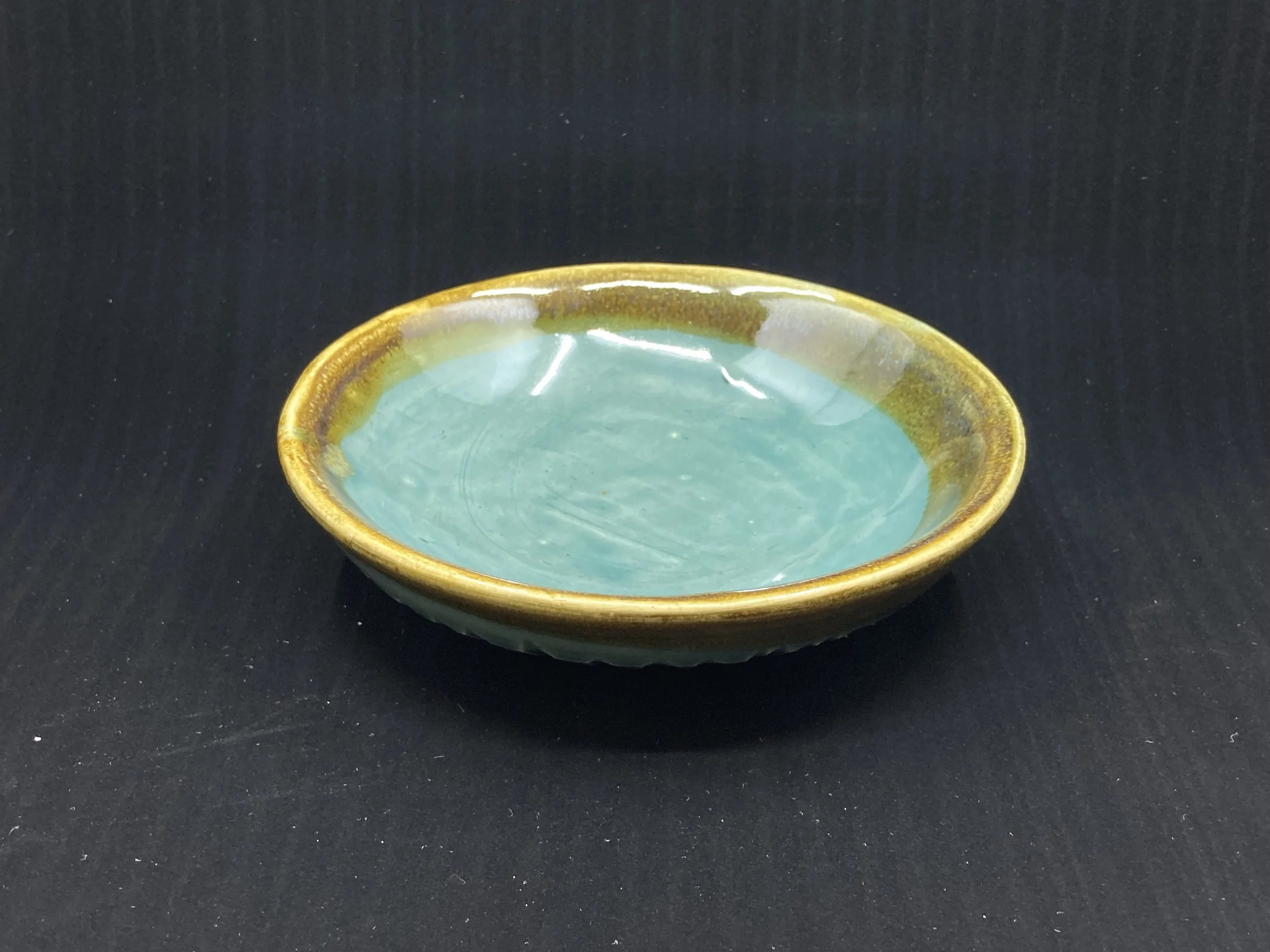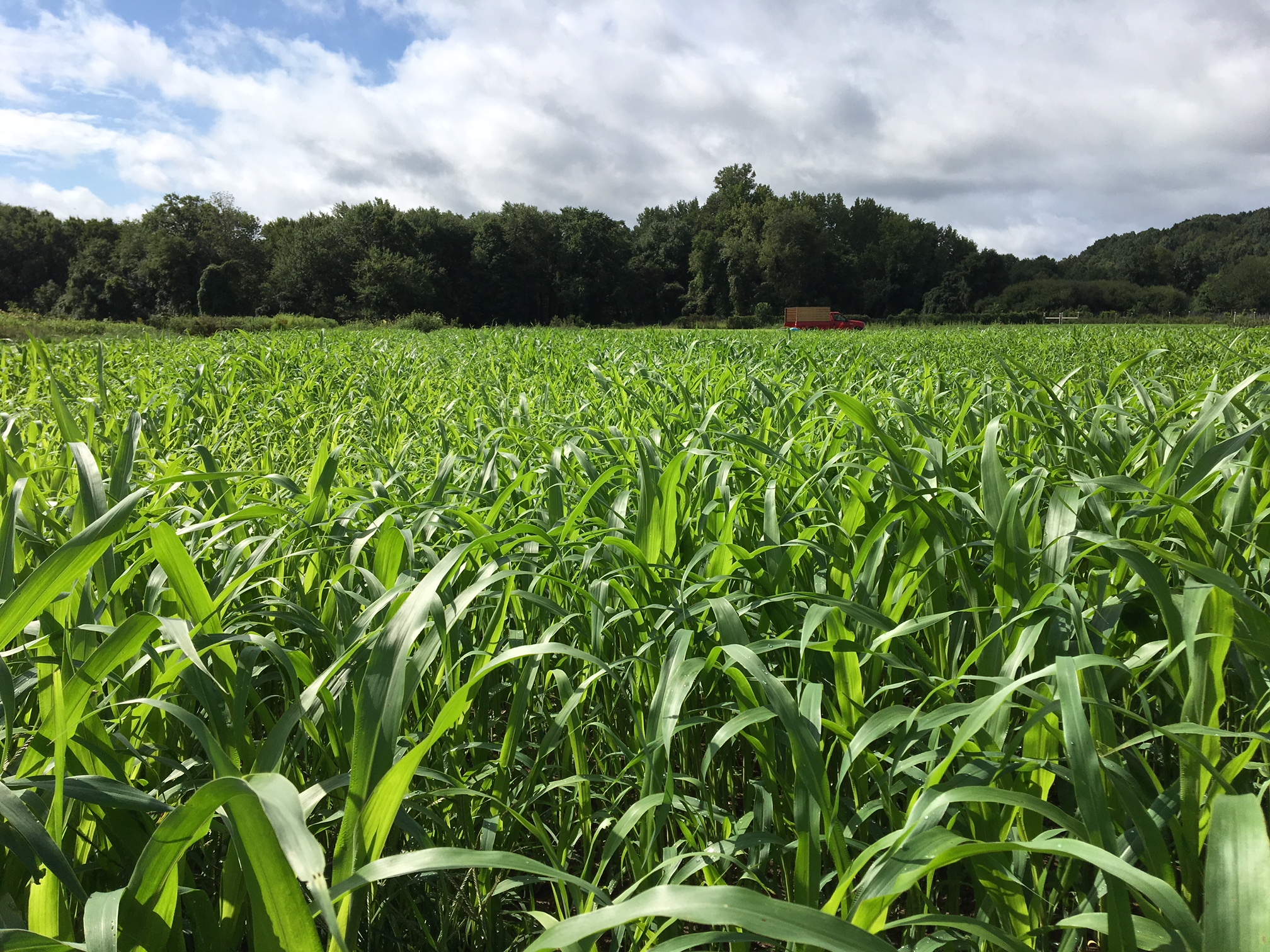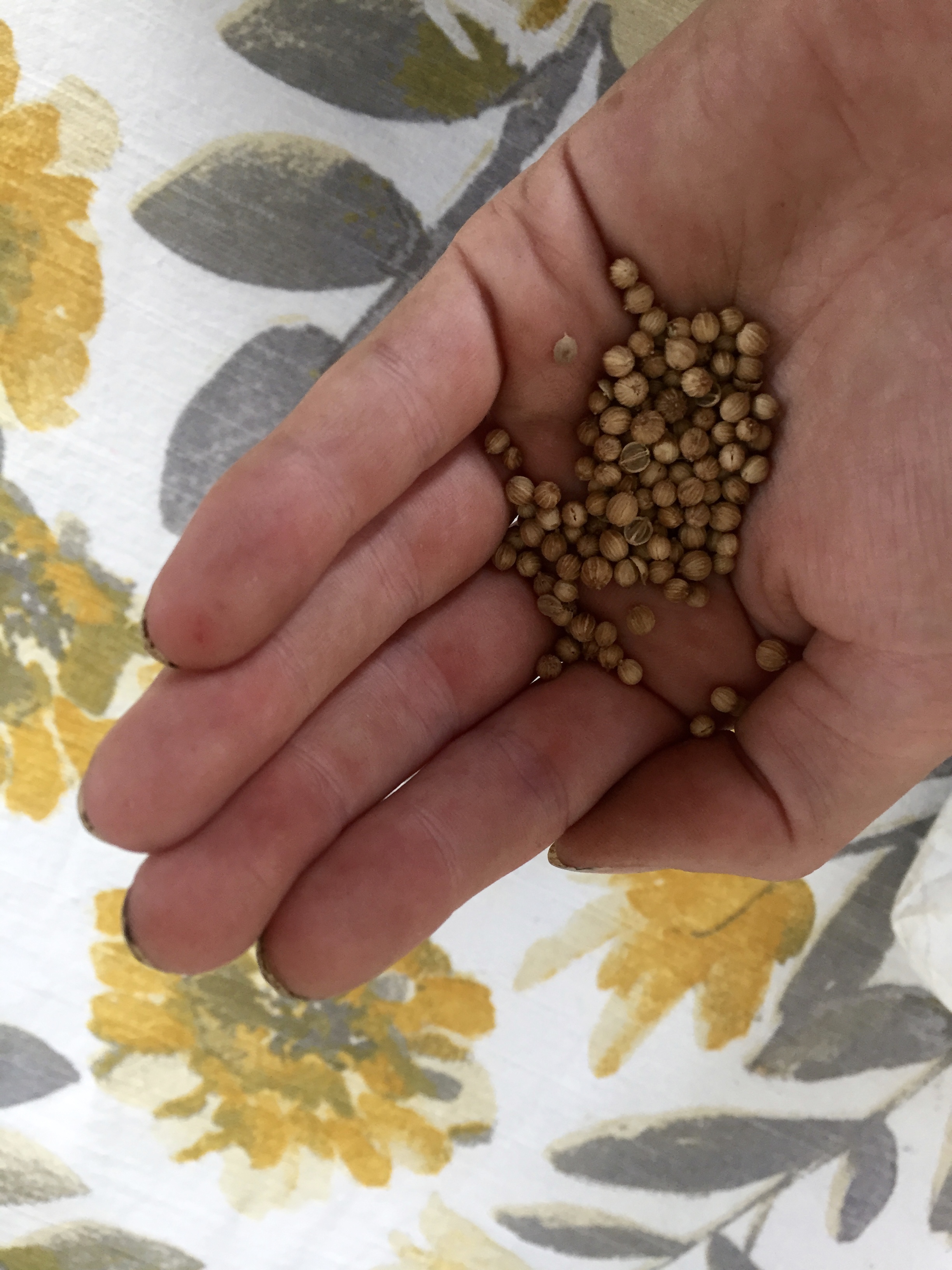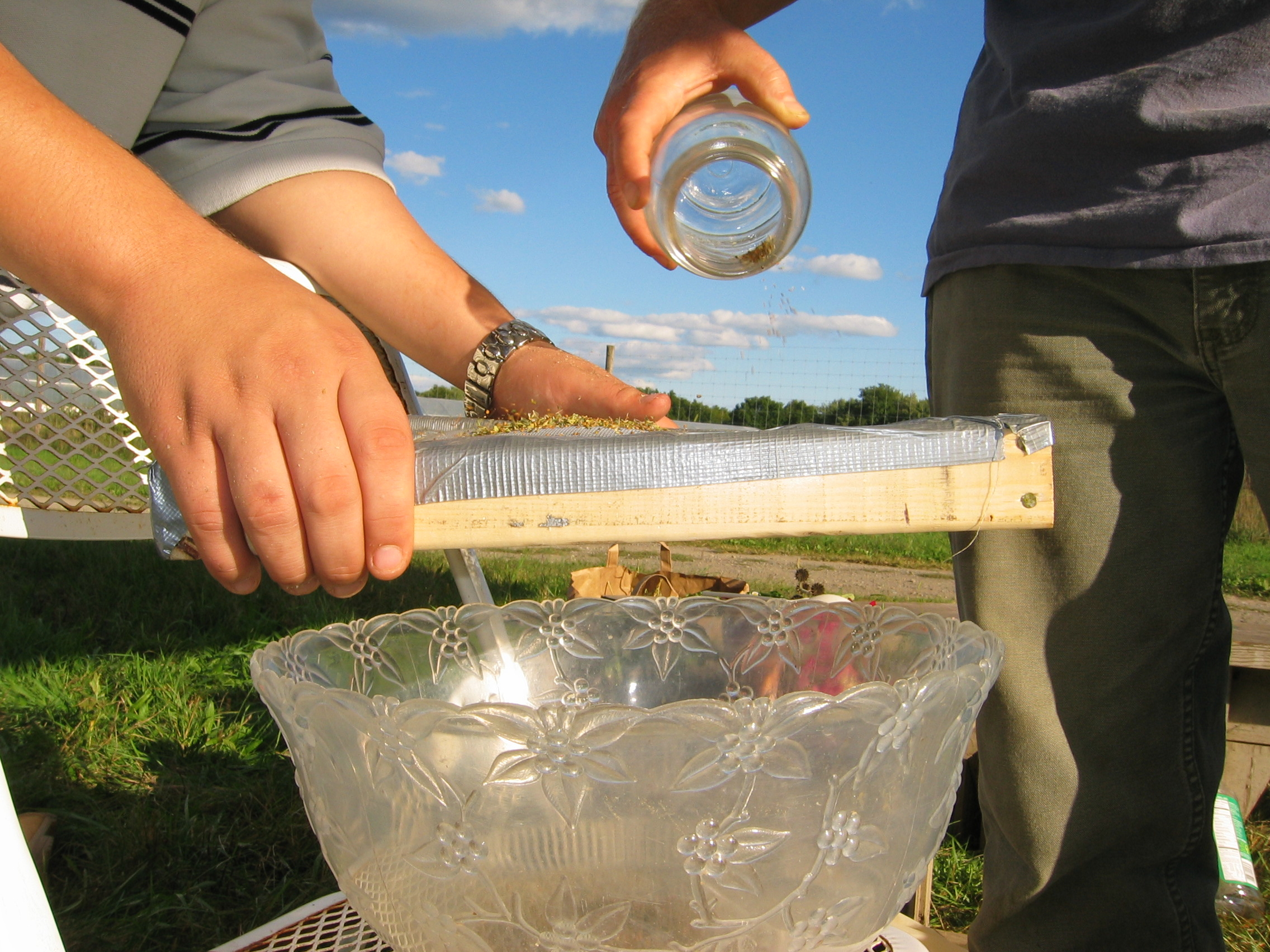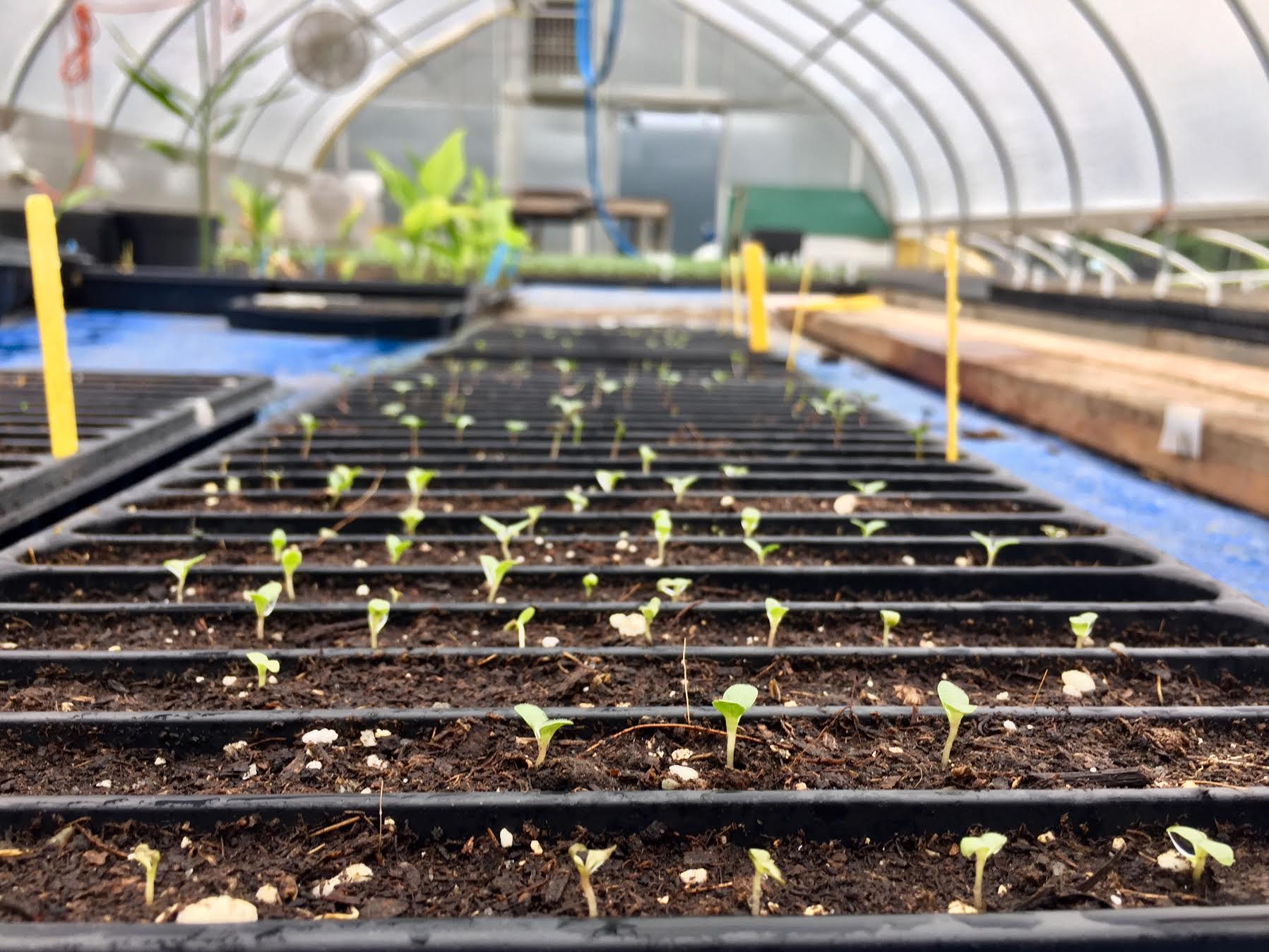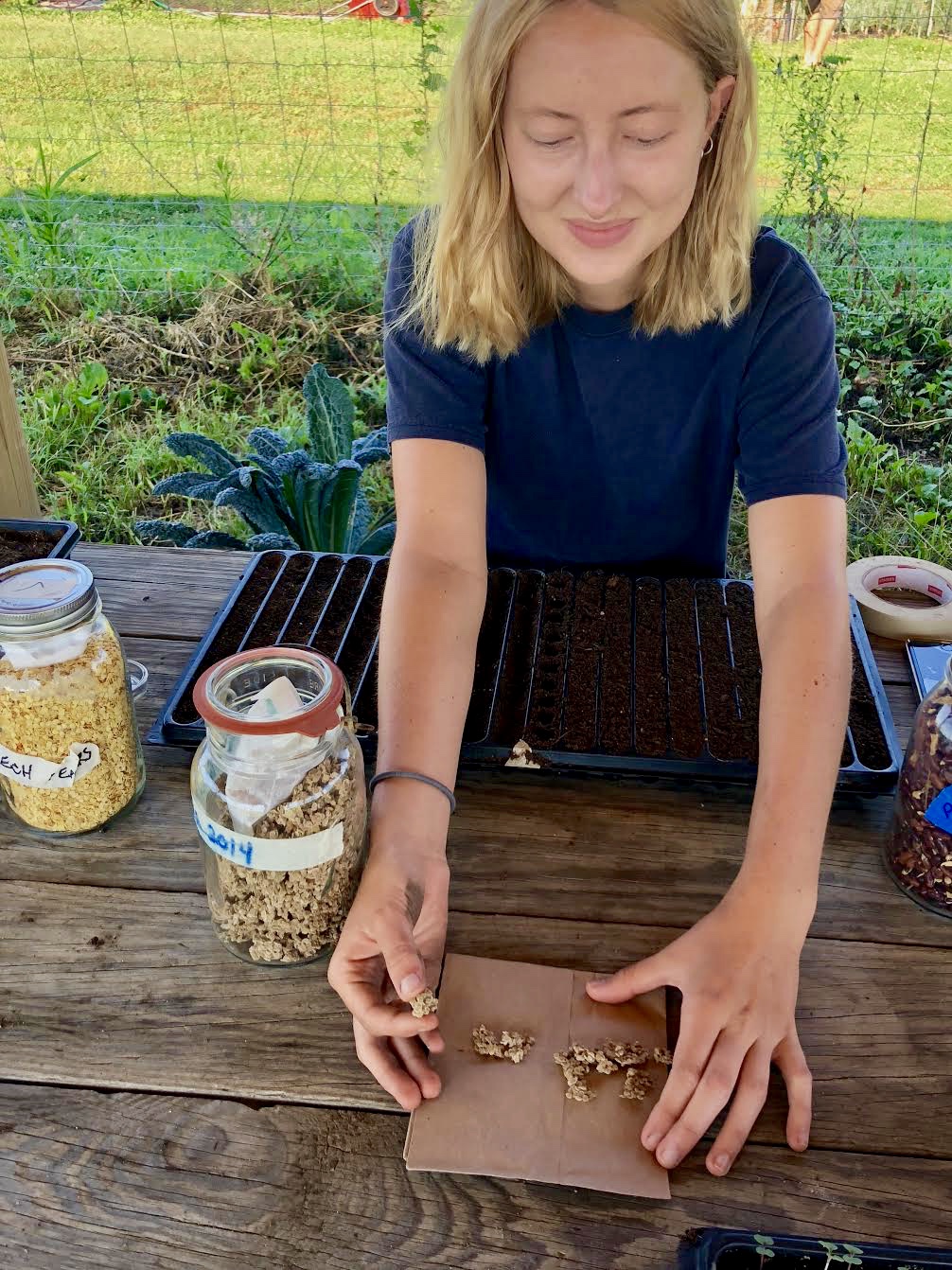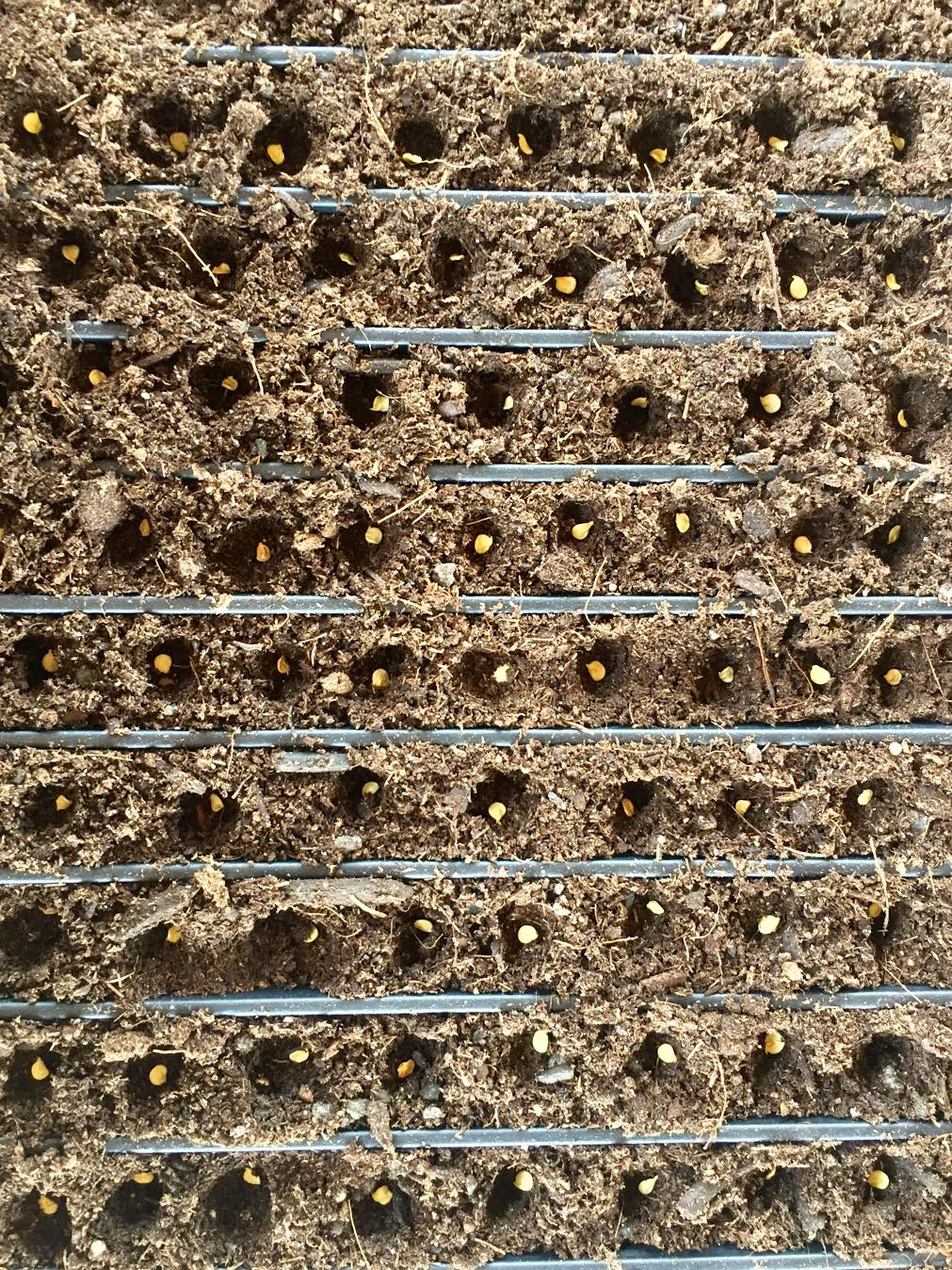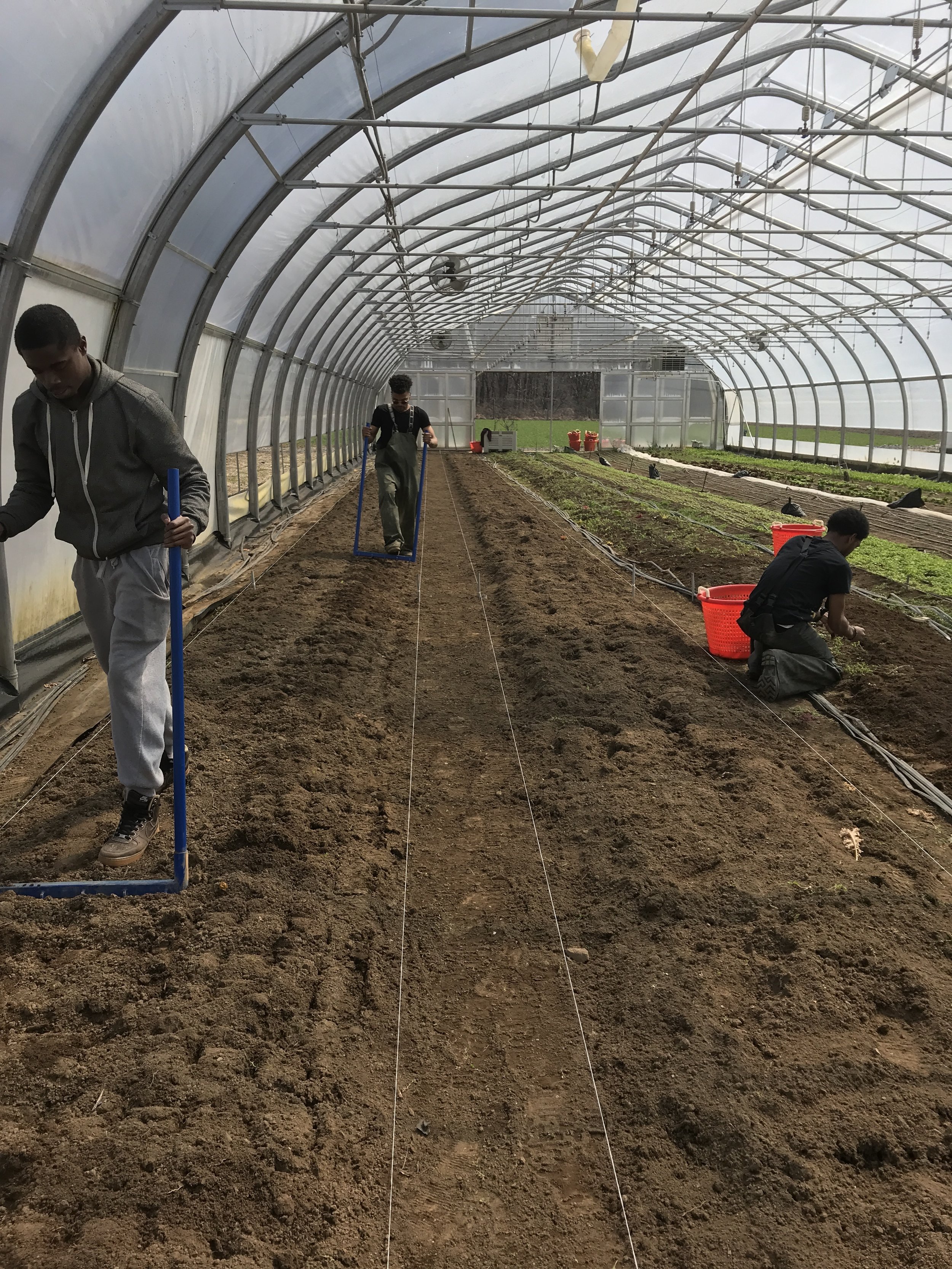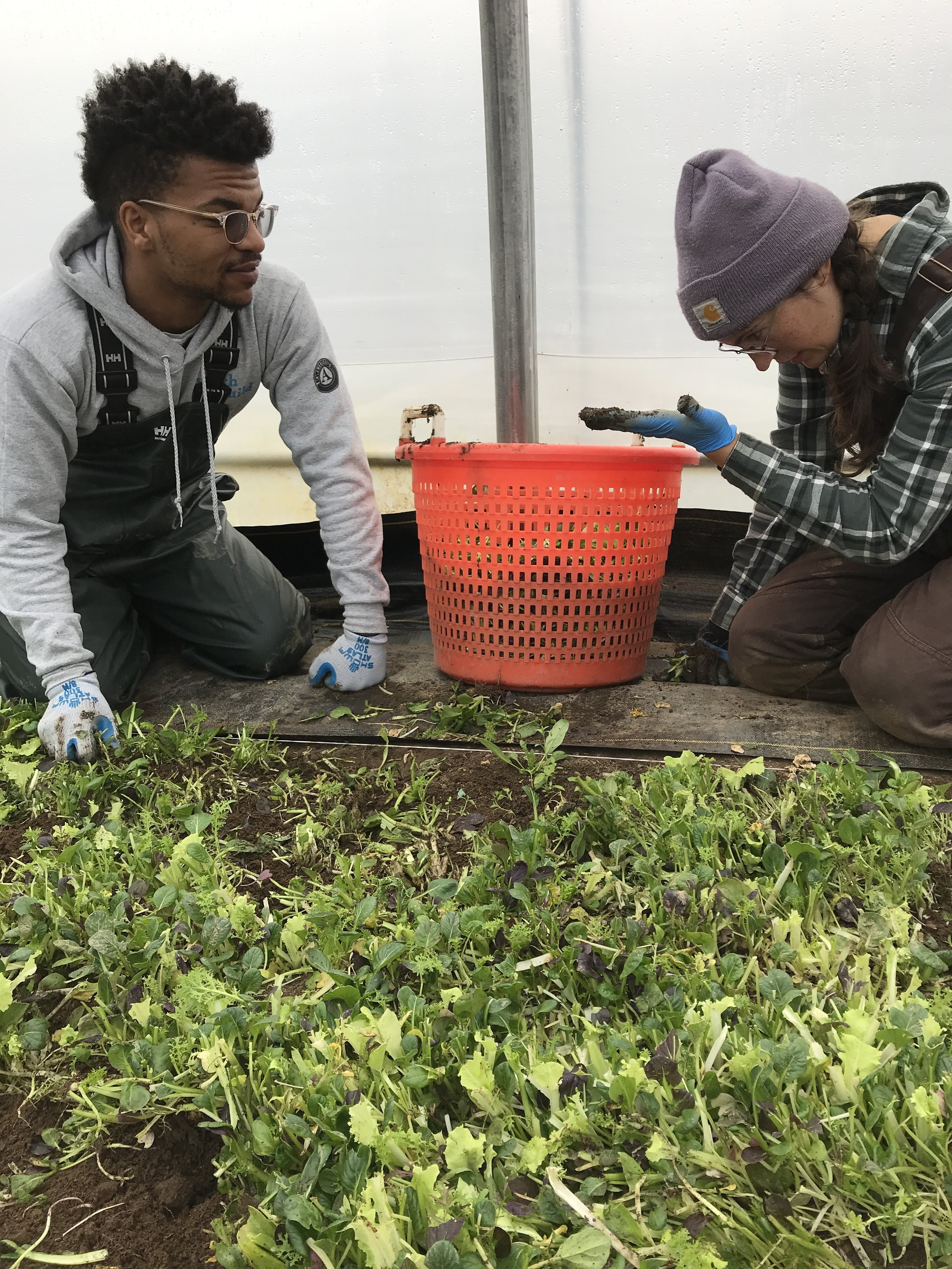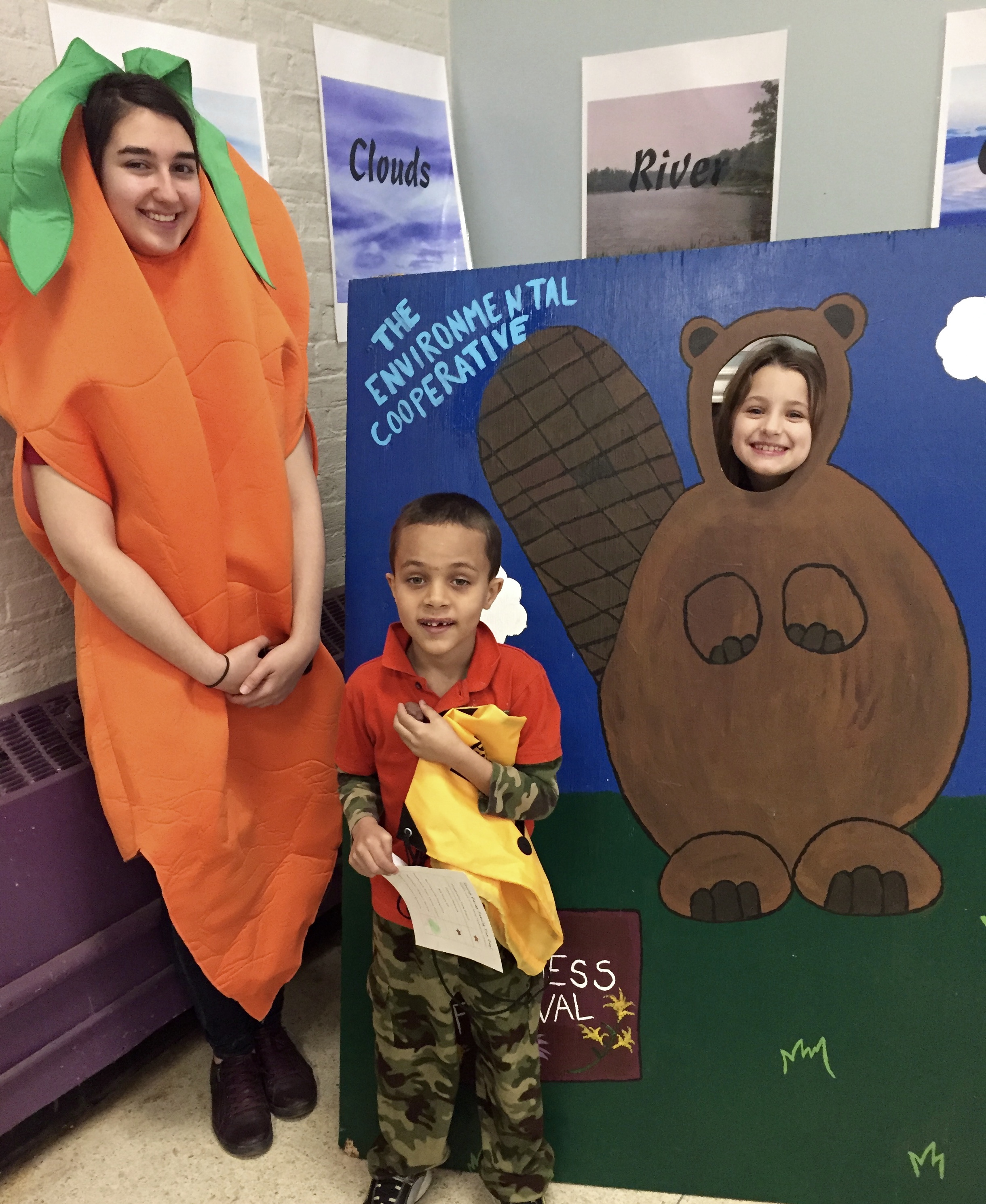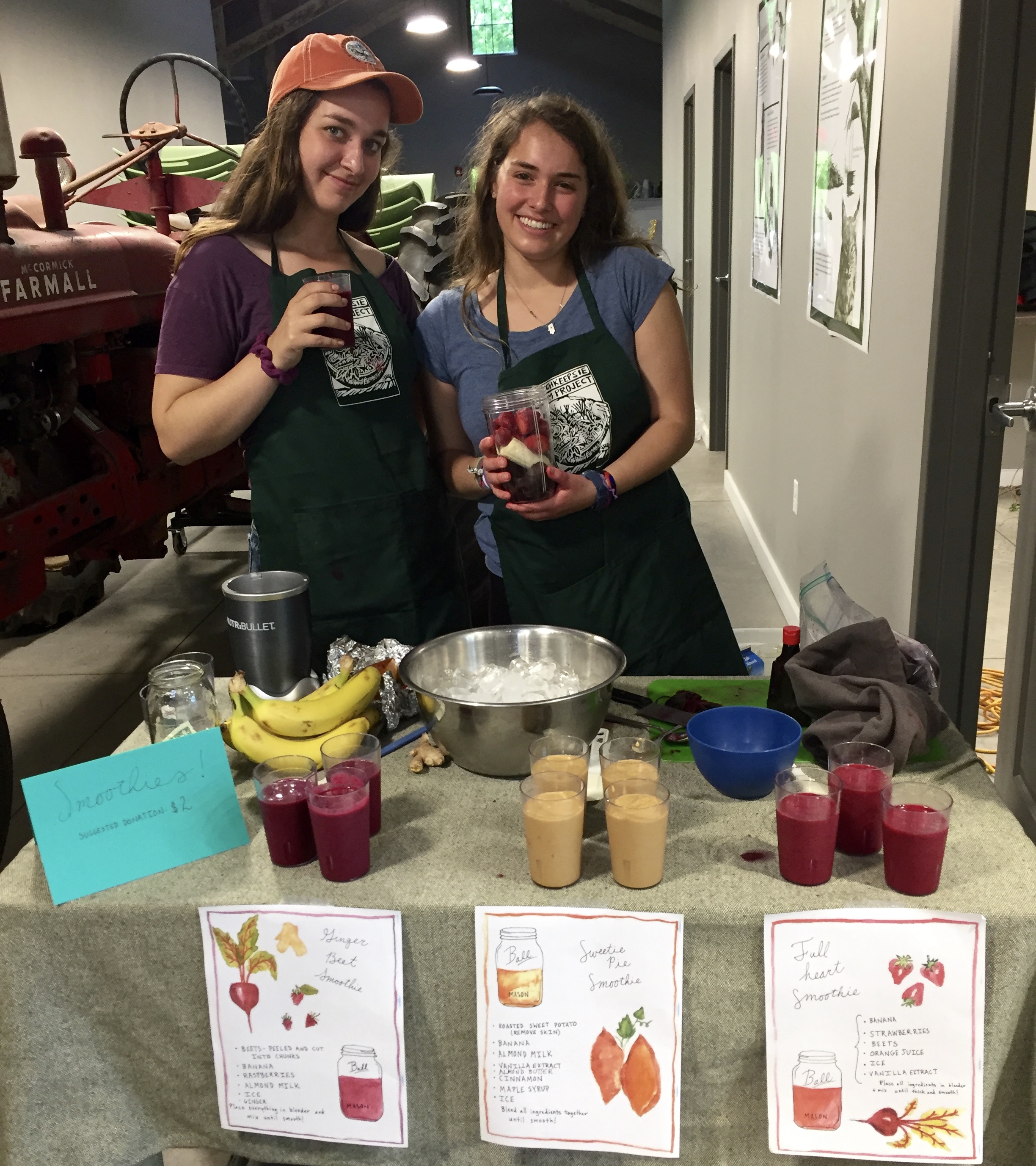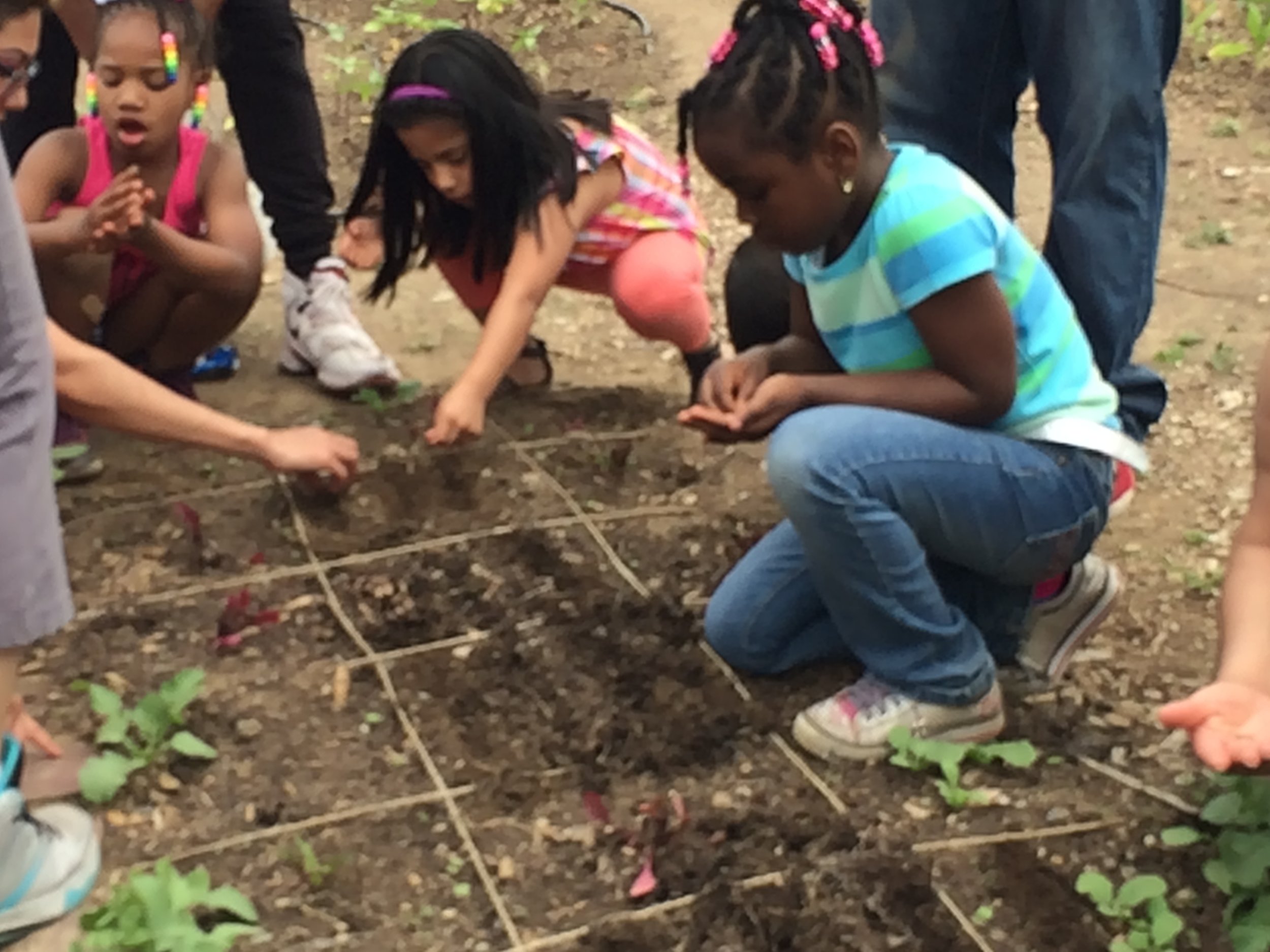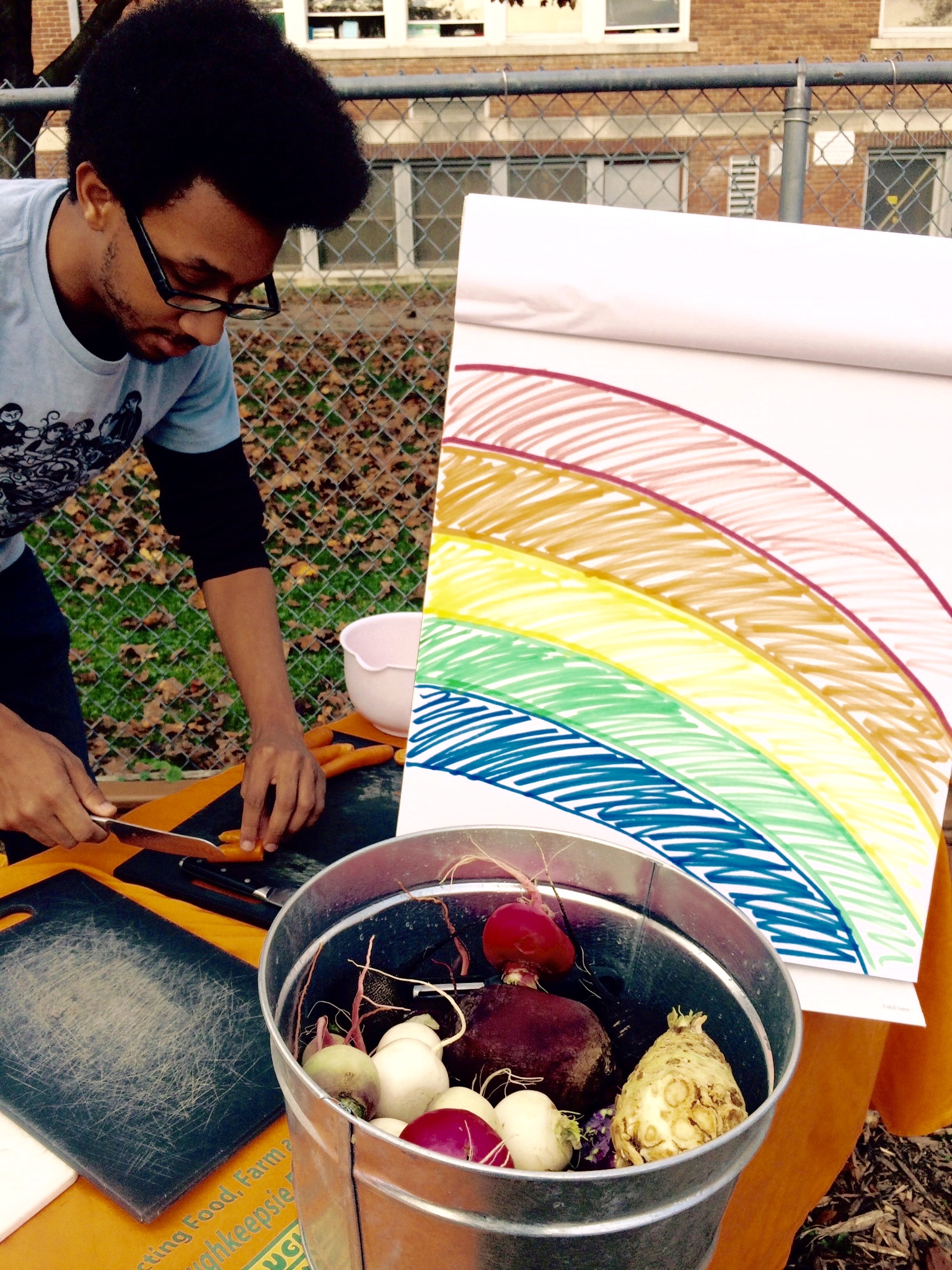Grower's Row: September
By: Lauren Kaplan, Farm Crew Leader
For many of us, the start of September marks the unofficial beginning of the fall season.
Chris and Kira harvesting 3,266 delicata squash
Lauren and Laura harvesting 7,023 butternut squash
For our CSA shareholders, the change in season means the start of Fall Share CSA! This week kicks off with the first of the winter squash, of which we harvested literally tons (nearly 5 tons of butternut alone!) over the course of two intensely hot, humid days. The season will start with delicata, followed soon by acorn and spaghetti squash. (Be sure to take advantage of the glorious week or so when tomatoes, garlic and spaghetti squash overlap to make a summery, sweet take on spaghetti dinner -- with or without the meatballs.) With the arrival of cooler weather, we’ll also see the return of early-season favorites like arugula, broccoli, cabbage, radishes and beets. Look also for a parade of pink, purple and white potatoes and humongous, juicy yellow onions.
German getting delicata ready for distribution
For us, the start of fall means that we farmers can look forward to cooler working weather and a lessening of main-season weed pressure. As more and more of the farm grow lush and green with cover crops like buckwheat and sudan grass, we also begin to anticipate darker mornings, bulk harvests, and a game I like to think of as “cooler tetris”. (This involves juggling, moving, and rearranging all of the tens of thousands of pounds of fall and winter crops that are all vying for storage space and accessibility simultaneously.) We look forward to welcoming a new group of Vassar students onto the farm, and preparing (already) for our Winter CSA.
Fields of sudan grass and buckwheat cover crop
It may seem like a leap to be thinking about December already, but most of us are more than ready for the change. From a grower’s perspective, this season -- with all of the hot and wet weather -- has been a real struggle. The extended periods of wet brought lots of disease. It started with downy mildew on basil and moved into powdery mildew on our summer and winter squash. The beet greens, chard, kale, collards, and celeriac also suffered significantly from disease. And the intensely hot days killed off a few rounds of eggplant and pepper blossoms, resulting in a few awkward weeks of no ripe fruit. Only in the last couple of weeks have we started harvesting from some really healthy new successions of chard, kale and collards, and bringing in an abundant crop of beautiful sweet peppers.
Despite the struggles of the season so far, there is still an abundance of beautiful food coming from the fields -- and we are excited to continue sharing the bounty with you.
The whole team thinning and weeding winter radishes and turnips
Thanks for all you do -- for working alongside us even on hot and wet days, for bringing us surprise deliveries of zucchini bread and assorted baked goods, for giving us your feedback, for your patience, and for your kind words of appreciation.
Onward into September!





